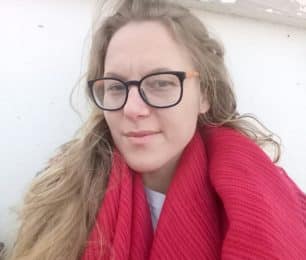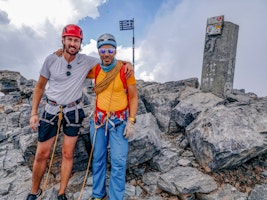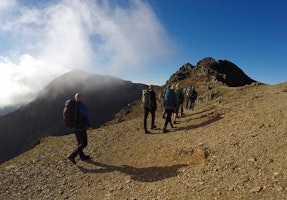With yoga becoming increasingly popular as a way to disconnect from noise and reconnect with a sense of self and vitality, and to improve overall wellbeing, it is being incorporated as a complement to many activities. Combined outdoor programs that integrate hiking with meditation, breathing techniques (pranayamas) and postures (asanas) add both to the hiking and to the yoga. Furthermore, multi-day adventures in nature that combine both activities in paradisiacal settings make for unforgettable and replenishing active holidays that satisfy body, mind, and spirit.
Benefits of combining yoga and hiking
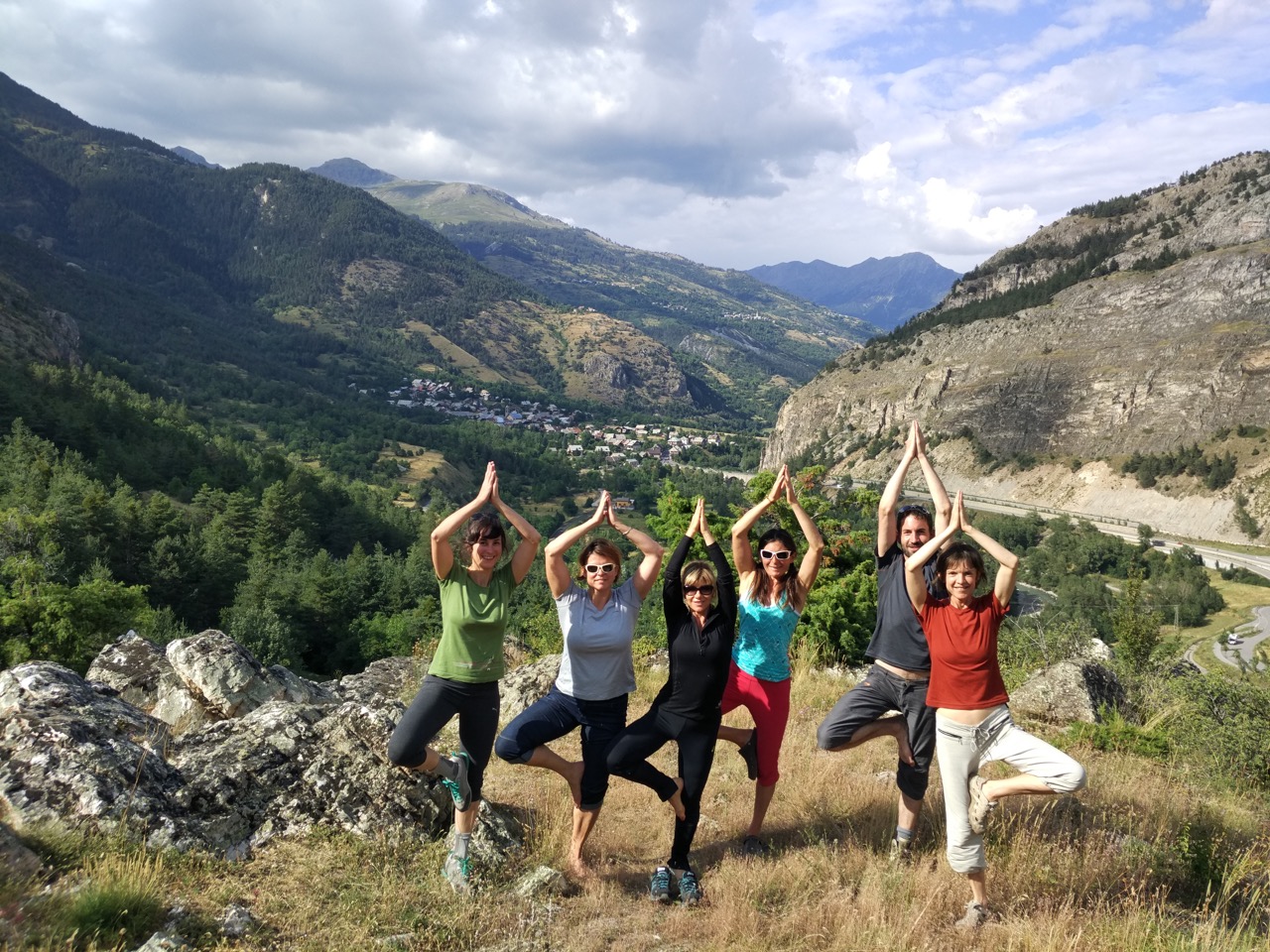 Hiking and yoga
Hiking and yoga
Photograph courtesy of Caroline Freslon
- Heightened awareness and enjoyment
Practicing yoga on an outdoor adventure is a great way to “tune in” and to have a more acute awareness of yourself and your surroundings. Many yoga techniques invite you to be more mindful and present in your experiences. As you quiet the mind and acquire a more conscious attitude, you will be better able to appreciate the nature that surrounds you.
Additionally, many asanas are inspired by nature and have symbolic meanings. Tadasana, a.k.a mountain pose in English, invites us to reflect on the connection between the symbolic base at the feet, which connects with the earth, and the symbolic peak at the head, which connects with the sky. Surya namaskar, or sun salutation, is a famous yoga sequence that is used, as its name suggests, to salute the sun.
Practicing these postures in nature is a great way to connect both with the postures and with the environment in a different way from what we’re usually used to.
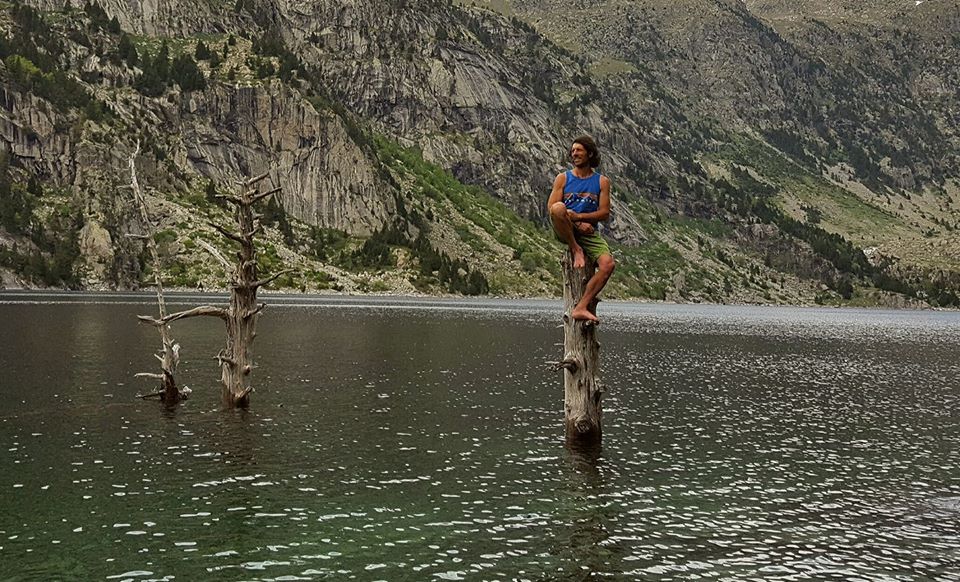 yoga and hiking
yoga and hiking
Photo courtesy of Jordi Tosas
2. Deep breathing, strength, and flexibility
Yoga involves many different breathing techniques called pranayamas that are used for physical and meditative purposes. The word prana actually translates to life force, and yogis consider conscious breathing to be as important (or more) in terms of nourishment as eating. Furthermore, incorporating these breathing techniques can be useful on long, uphill hikes, and also at high altitudes when oxygen levels drop. Naturally, practicing these techniques outside in clean, natural environments, especially where there is thick vegetation, is all the more beneficial.
Yoga postures, known as asanas, are wonderful for strengthening and stretching muscles, as well as for balancing and aligning the body. A yoga class before and/or after a hike is a great way to warm up and cool down, and therefore avoid injuries and muscle aches. Keep in mind that if you have any prior injuries or health issues, you should communicate them to your guide and yoga instructor beforehand so that they can instruct you regarding any poses that you should avoid.
3. A relaxing and replenishing recovery
After a long hiking day, a yoga class will allow you to relax and recover. Savasana, also known as corpse pose, is deeply replenishing and activates the parasympathetic system (the “rest and digest system”) that restores the endocrine, immune, digestive/urinary and reproductive systems, muscles and joints, and regulates heart and breathing rates. This pose usually wraps up every yoga class and will leave you feeling revitalized no matter how high or hard the day’s hiking.
Types of Yoga
There are many types of yoga and many variants that continue to arise every day. Most of the yoga practiced in the western world is a spin on Hatha Yoga, which focuses on asanas or postures, combined with breathing and meditation techniques.
Classic Hatha consists of holding traditional poses in a yoga sequence for a number of breaths, while Ashtanga is more dynamic and aerobically demanding. Vinyasa yoga focuses on smooth transitions between one pose and the next, and the Iyengar tradition often uses props such as belts and blocks to perfect alignment and assist more difficult poses. Kundalini yoga focuses on activating energy and works with the seven chakras. Acroyoga combines acrobatic practices with yoga. Bikram is practiced in a hot room to sweat out toxins.
Most hiking and yoga programs incorporate classic Hatha classes, Vinyasa or Ashtanga, whereas Acroyoga is popular among rock climbers.
Equipment and Physical Preparation
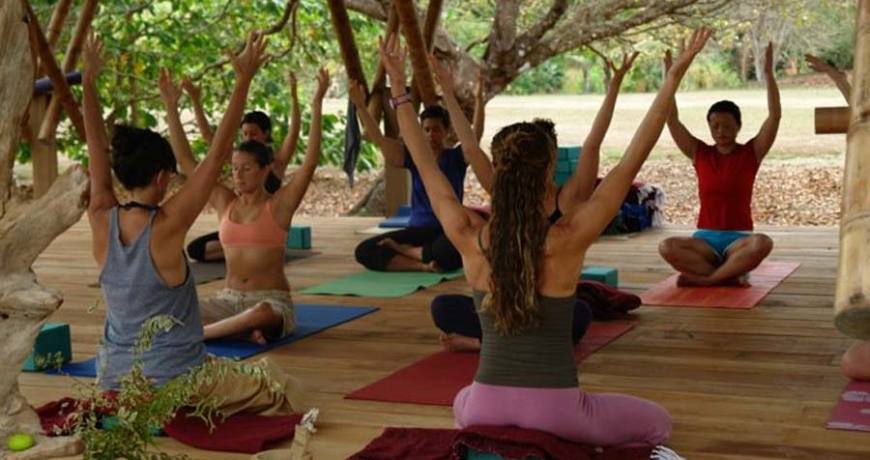 yoga and hiking
yoga and hiking
Photo courtesy of Welcome Nepal Treks
You don’t need to be a gymnast or an athlete to practice yoga. Although some poses are more demanding than others, many are beneficial to all. In fact, elder people, pregnant women, children, and people with injuries often practice yoga for its multiple benefits. If however, you don’t have any experience or you have some sort of physical ailment or particularity, make sure that you sign up for a program that is suitable for your body, your level, and skills.
In terms of equipment, a yoga and hiking program usually does not require much. For hiking, you will need comfortable clothes, a good pair of hiking boots and an adequate backpack with all the necessary accessories for your trip, which will depend on trip duration and intensity. For yoga, you will need comfortable loose clothing and a yoga mat which, on a longer multi-day adventure can serve as a mattress beneath your sleeping bag if you are camping. Keep in mind as well that yoga is practiced barefoot.
Top 5 Yoga and Hiking Programs
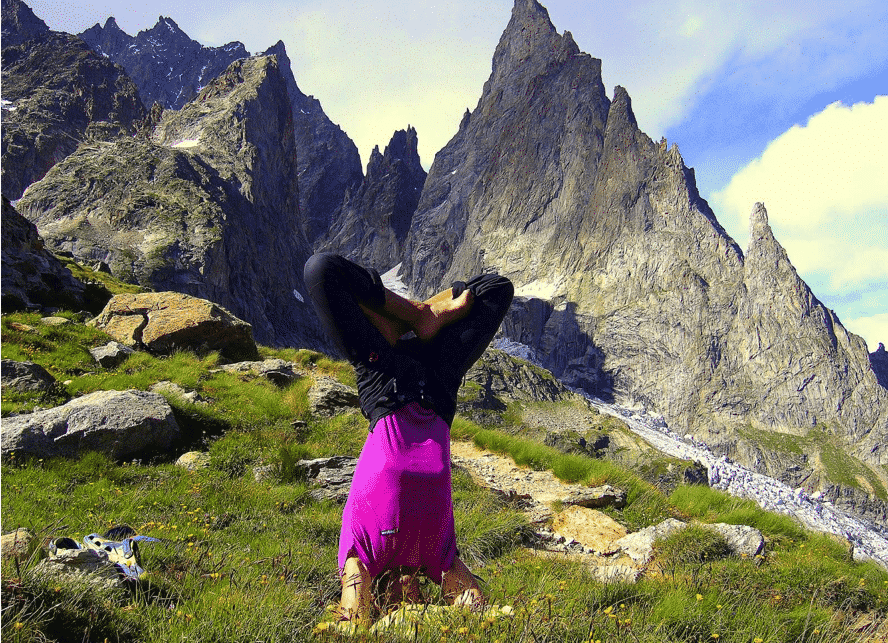 yoga and hiking
yoga and hiking
Photo courtesy of Jordi Tosas
10-day yoga and hiking in Nepal: Because yoga originates in the East, as part of Hindu and Buddhist spiritual traditions and practices, the Himalayas are the ultimate yoga and hiking destination. On this ten-day program, you will not only get to explore some of the most inspiring and emblematic spots in Nepal, as well as hike at the foothills of the Himalayas, but you will also spend two days practicing yoga and meditation techniques at a Buddhist Monastery and catch a stunning sunrise over some of the world’s highest mountains.
Trip level: Intermediate. Best time to visit Nepal: The best season to visit Nepal is during the dry months from April to June, and from October to December. However, this program is open year-round. And, if you would like longer or shorter yoga and hiking adventures in Nepal, they are also available.6-day yoga and hiking around Simplon Pass in Switzerland: The Alps are another top spot for hiking and yoga. The stunning landscapes and fragrant nature are ideal for this replenishing combination. The Simplon Pass is located in the Canton of Valais and is both pristine and easy to access. Furthermore, this program highlights the connection with nature and the observation of the local flora and fauna as one of its focal points. It involves 4-hour daily hikes complemented by yoga sessions and cozy overnight stays at Simplon.
Trip level: easy. Best period: During the summer months, between June and September.9-day guided hiking and yoga in Bulgaria: Outdoor sunset yoga, wine tasting, amazing hikes in the Vitosha and Balkan Mountains, exploring caves, monasteries, and fortresses, and overnights at a spa hotel are only some of the highlights of this program that is all about enjoying life and discovering the awe-inspiring Bulgarian landscapes and culture on a combined multi-day hiking and yoga adventure.
Trip level: easy. Best period: during the warmer half of the year from May to October.Hiking and yoga near Xitle Volcano near Mexico City: This short program near Mexico City is a great way to get outdoors, explore one of the local landmarks in the Cumbres del Ajusco National Park, and practice yoga in a unique environment. Furthermore, it is an 8-hour adventure that is family-friendly too and can serve as a great warm-up hike for more challenging, longer adventures such as this Malinche, Iztaccihuatl and Pico de Orizaba climbing program.
Trip level: easy. Available year-round.Hiking and yoga in the Tijuca Forest, Río de Janeiro: If you’re traveling to Rio, you can’t miss this short hiking and yoga program in the stunning Tijuca Forest. The hike is brief and will take you to Pedra Bonita, from where you can see the beaches below. There, you will enjoy a combined meditation, hatha yoga, and vinyasa flow lesson. Then, you will cap the class off with a stunning sunset view over Rio.
Trip level: easy. Available year-round.
Other combined yoga and outdoor adventure programs
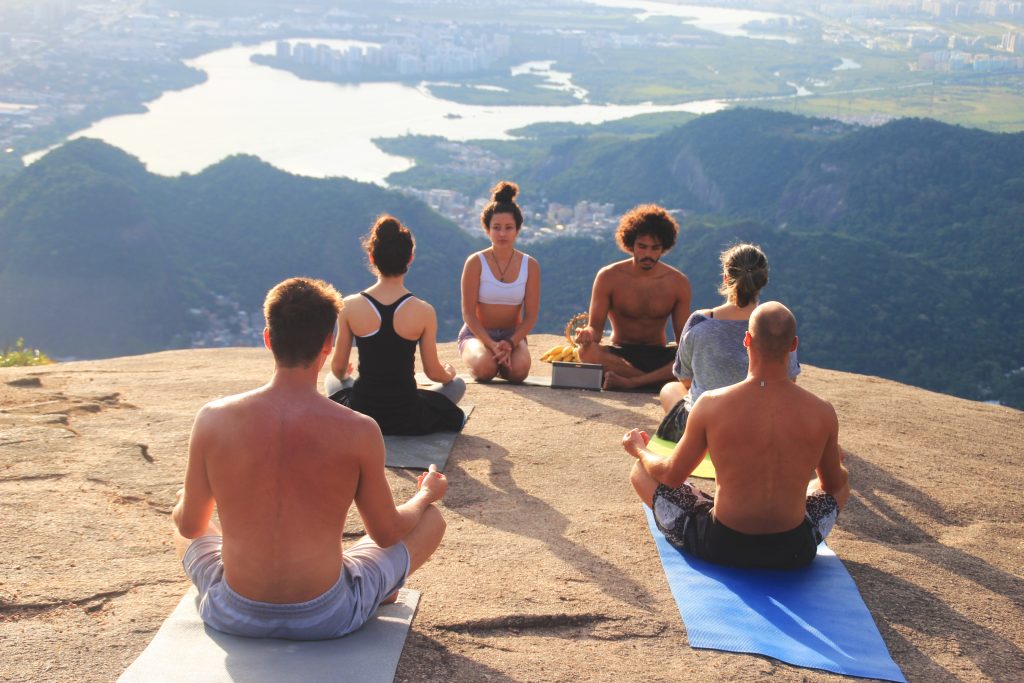 Hiking and yoga
Hiking and yoga
Photo courtesy of One Carioca Day
Yoga combines well with many outdoor activities. Rock climbing and yoga is very popular as meditation is considered a way to enhance concentration on the rocks, and rock climbing is considered by some to be a way of meditation. Furthermore, it also allows for acro-yoga practices in nature. You can even enjoy a family adventure that combines rafting, climbing, and yoga all in one.
Trail running and yoga is another great option for those that like to combine high intensity with a deep wind-down and intensive stretching. Furthermore, yoga works on your core strength, which helps in having a better running form.
Whichever your preference, don’t miss out on the chance to experience a unique active holiday that combines yoga and outdoor fun. Find the perfect program for you and start planning an adventure that will take you to reconnect with yourself and nature!

